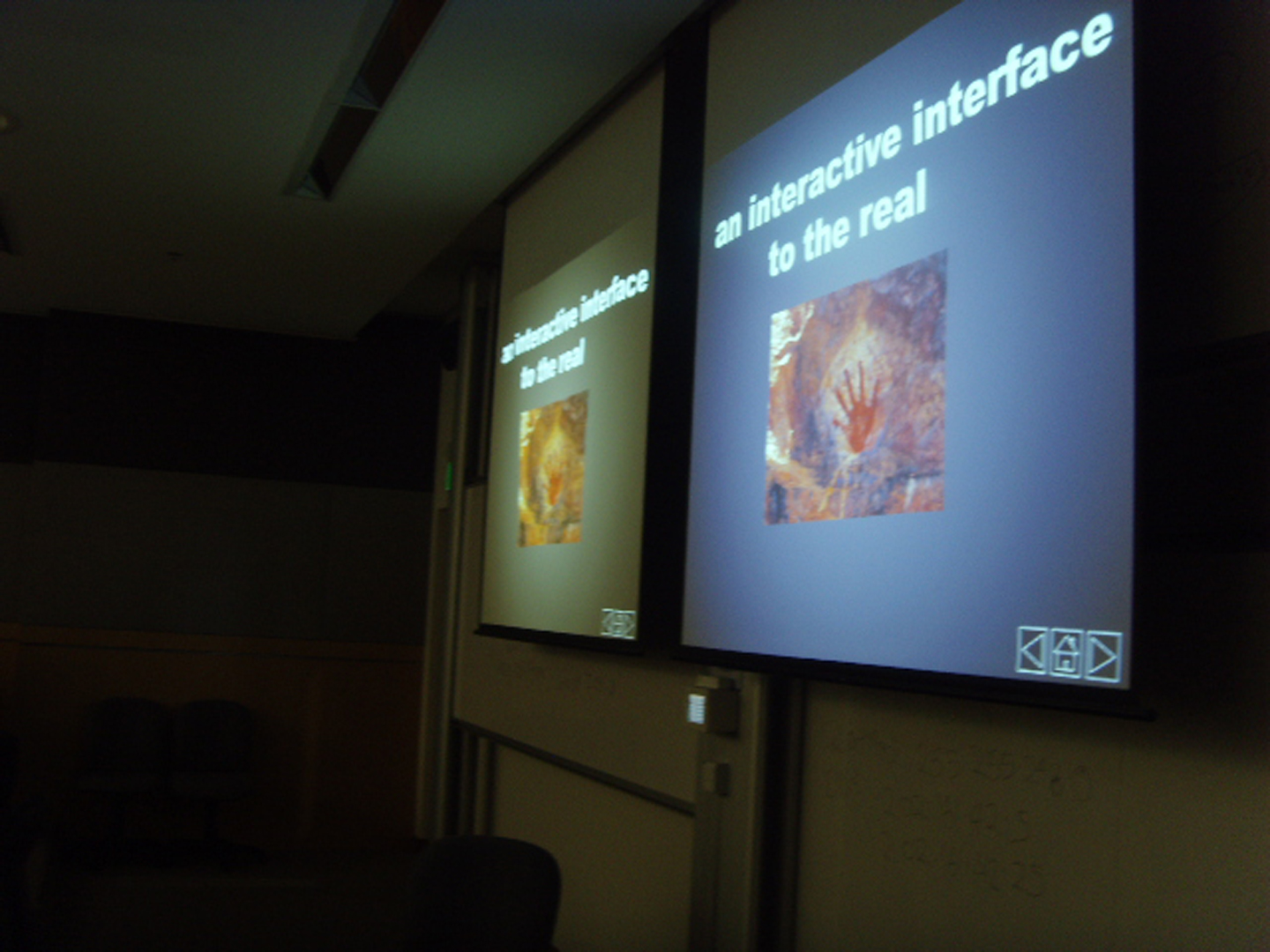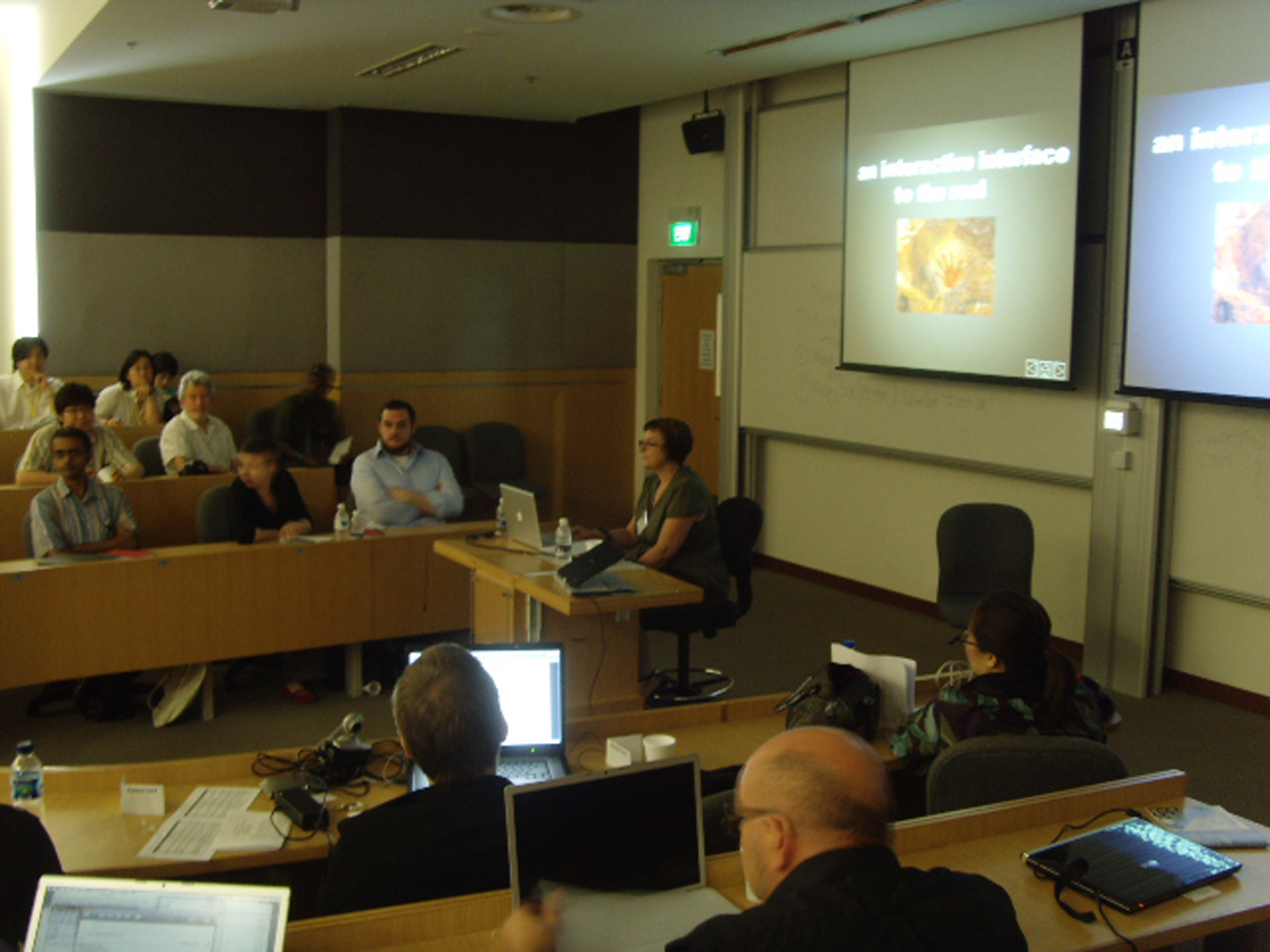“Reality Jamming: Beyond Complex Causality in Mediated Cultural Systems” presented by Cham
Symposium:
- ISEA2008: 14th International Symposium on Electronic Art
-
More presentations from ISEA2008:


Session Title:
- Hyperreality
Presentation Title:
- Reality Jamming: Beyond Complex Causality in Mediated Cultural Systems
Presenter(s):
Venue(s):
Abstract:
Introduction
It is clear through experience that there is some significant relationship between media representations and cultural effects. Yet as practice leads theory through the sheer velocity of technological change, experience outstrips theoretical understanding of the relationship between the sign and the signified, the simulation and the social, the model and the real. For example, the international crisis provoked by the publication of a cartoon of the prophet Mohammed as an unexpected result of networked global media; or the pre-mediated violence of the ‘trenchcoat mafia’, where signification was an intentional precursor to real effects; or the trajectory of ‘celebrity’, where the ‘virtually real’ is designed, acted out, consumed and fed back in a co-evolving eco-system of signifiation. The proliferation of digital media means it is increasingly important to understand interaction per se, especially the interaction between systems of signification and the real. This paper argues that all representational systems have a performative capacity for transformation of the real and that signification is a dynamic intermediate realm between the real and the conceptual which can be best understood as a realm of invocation.Mediated Cultural Systems
Within a ‘media’ culture, lived experience qualifies some significant relationship between representations and cultural effects. We can, for example, observe that successful advertising campaigns increase sales, for example, the ‘Coca Cola Oceana — a little wild’ campaign promoted their ‘rotational flavour’ strategy and resulted in a significant market share growth ‘in just four weeks’. This type of promotional activity is well accounted for in the post structuralist approach of Media & Cultural Studies, where effective analytical methodologies that are used to ‘deconstruct’ existing cultural ‘texts’ are also successful design methodologies for commercial success in industry. The same discourse also suggests that advertising campaigns create definable ‘pseudo communities’ where one shares a sense of identity anchored around one’s choice of products. Do you ‘subscribe’ to Coke or Pepsi; Volvo or Audi? Are you a ‘Marlborough Man’? Even an EEG machine can detect ones exposure to ‘putative branding moments within TV commercials’.Of course, sometimes, unpredictable behaviours emerge, such as the unexpected adoption of Kangol headwear by members of the US hip hop community in the 1980s: Run DMC were wearing the same wool beret as English Boy Scouts. Umberto Eco used the term ‘aberrant decoding’ to describe such behaviour; where [an artefact] is ‘decoded’ by means of a different code from that used to ‘encode’ it. Stuart Hall suggested three positions for interpretation of cultural artefacts; ‘dominant’, ‘negotiated’ and ‘oppositional’. It is clear that free will plays a dynamic part in interpretive processes; we cannot define a deterministic ‘cause and effect’ between advertising and behaviour because human beings can make choices.






